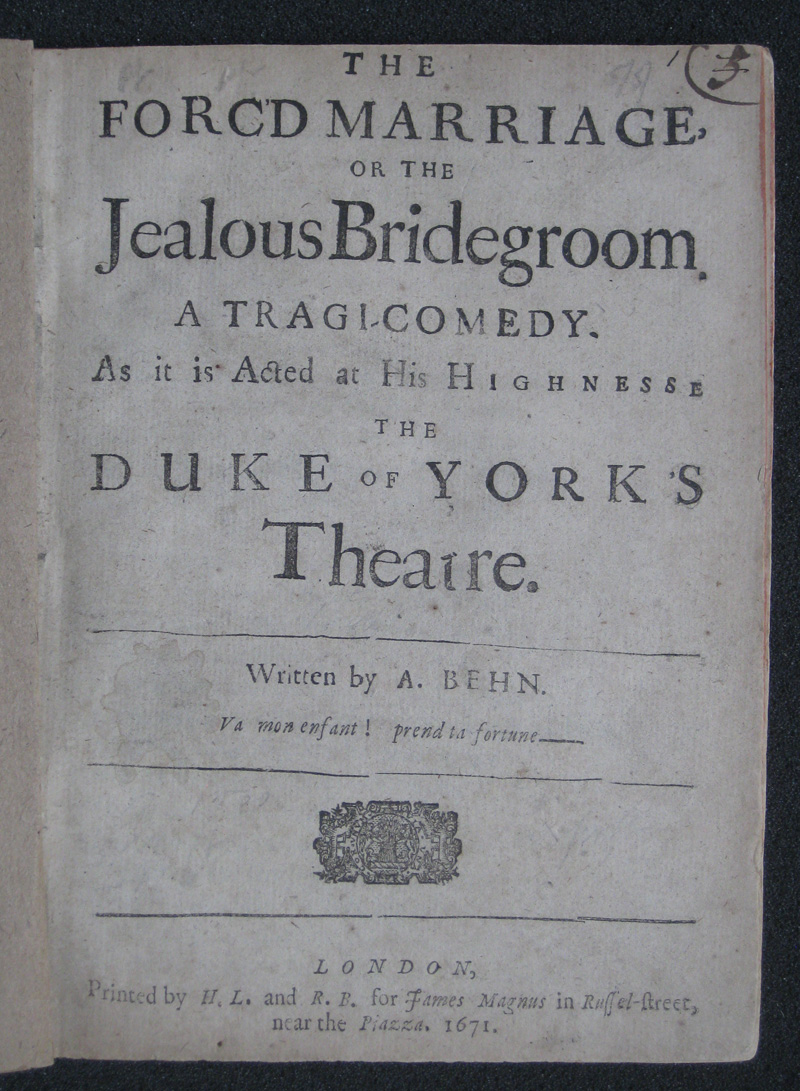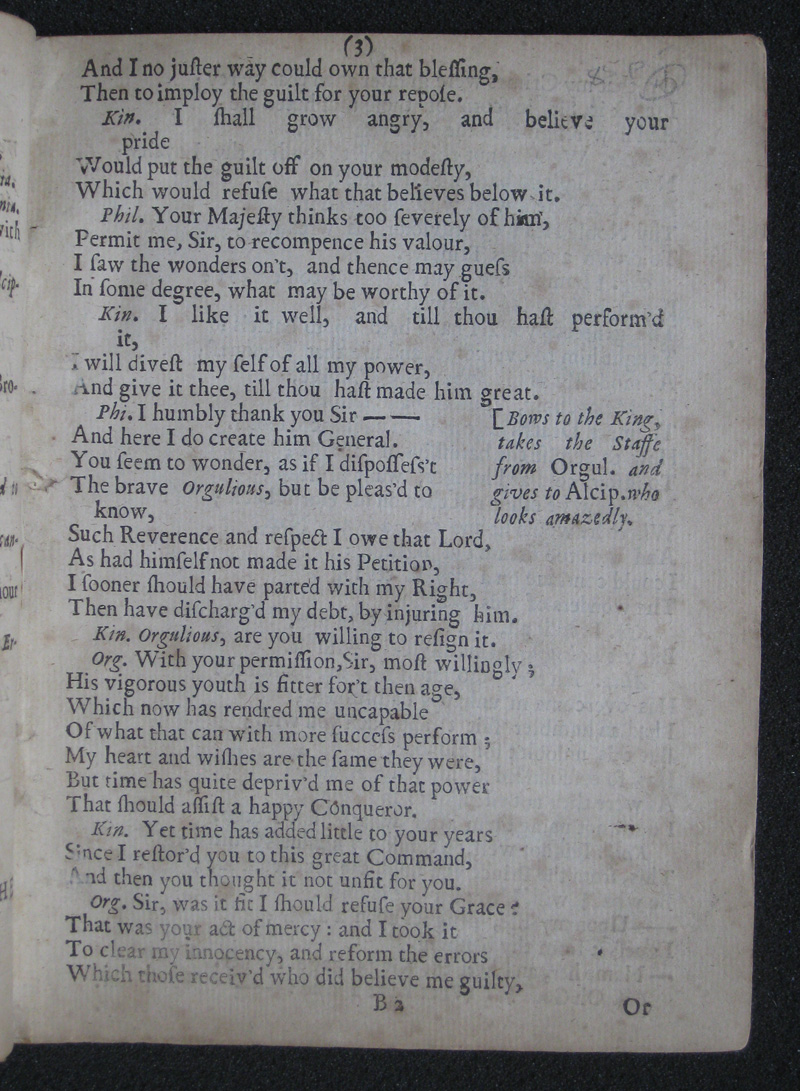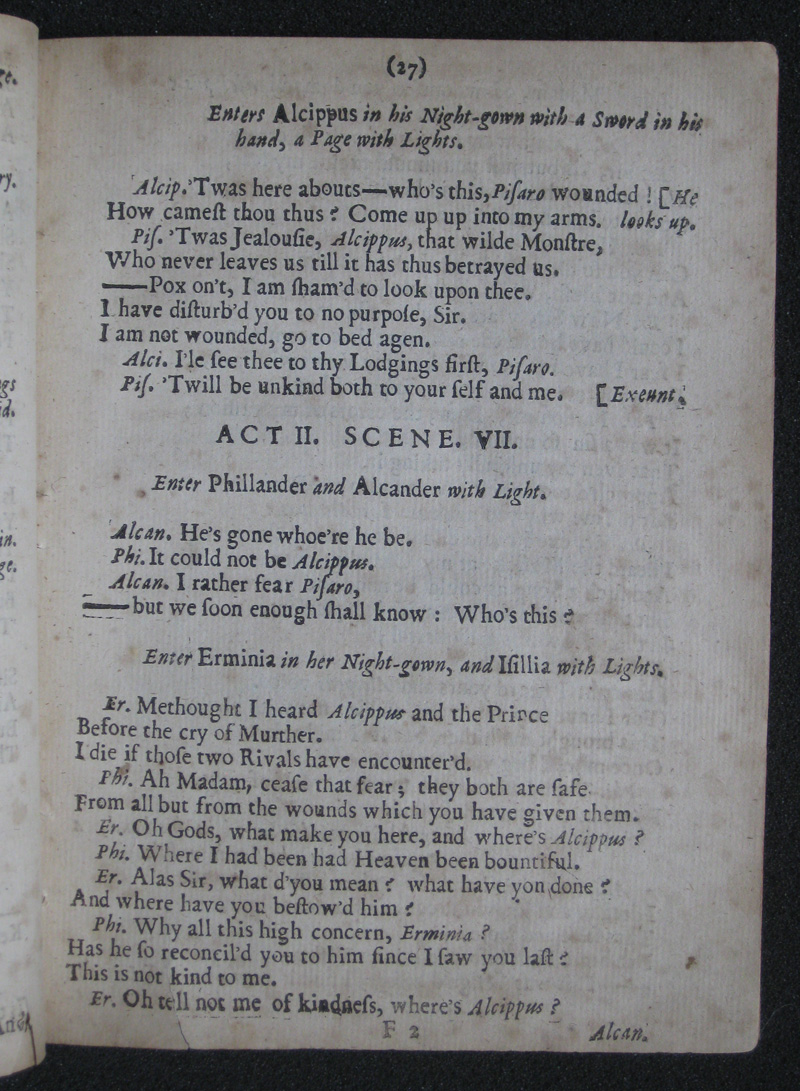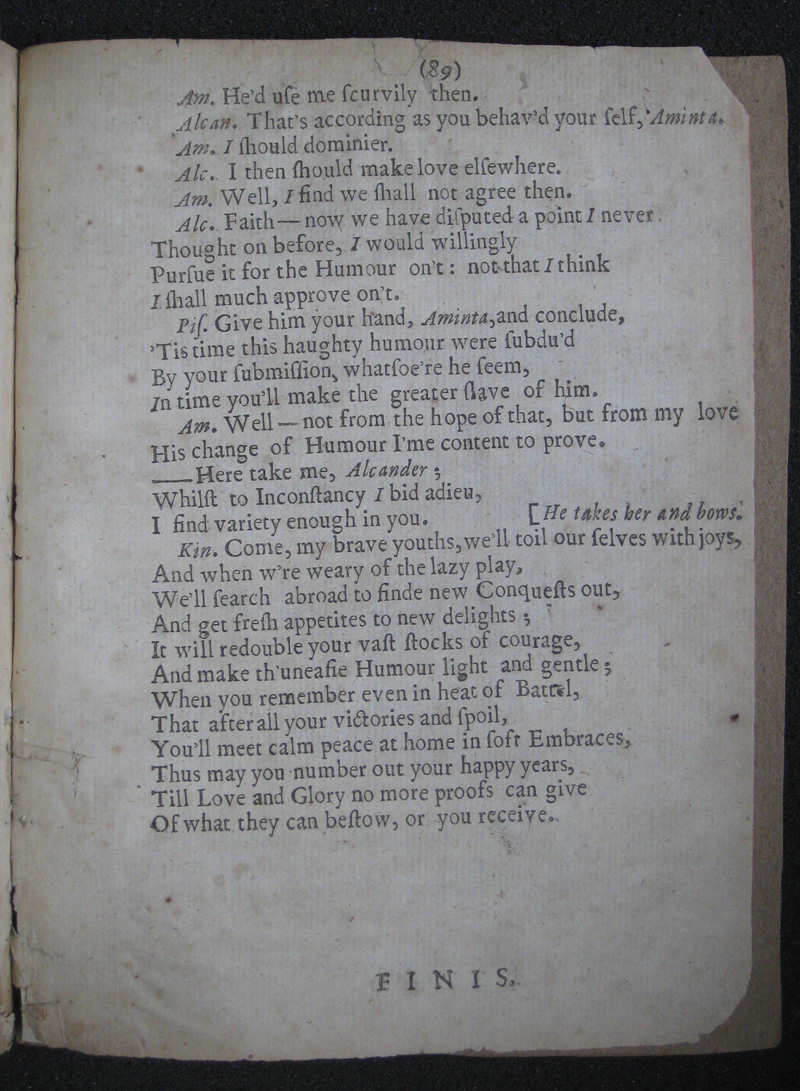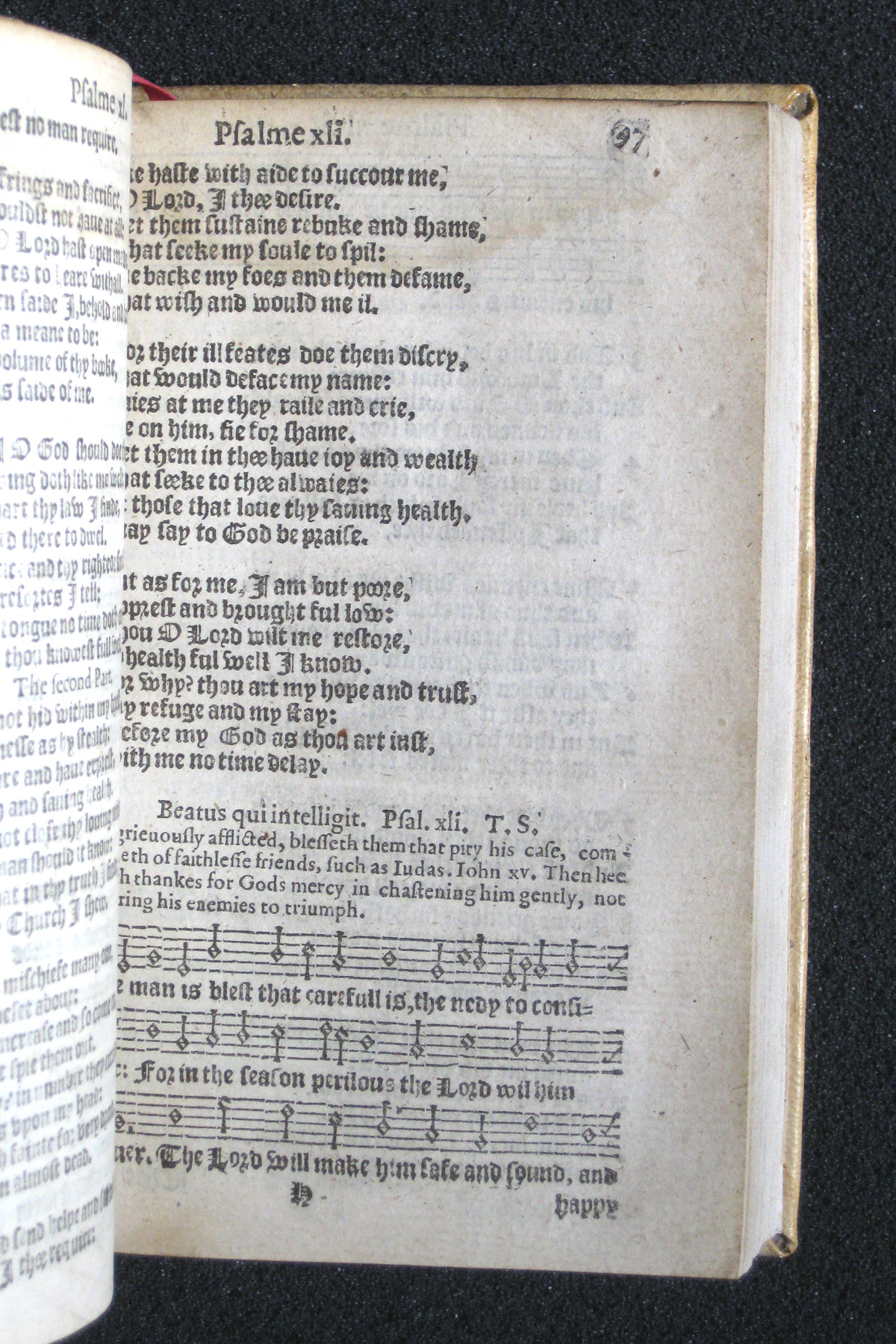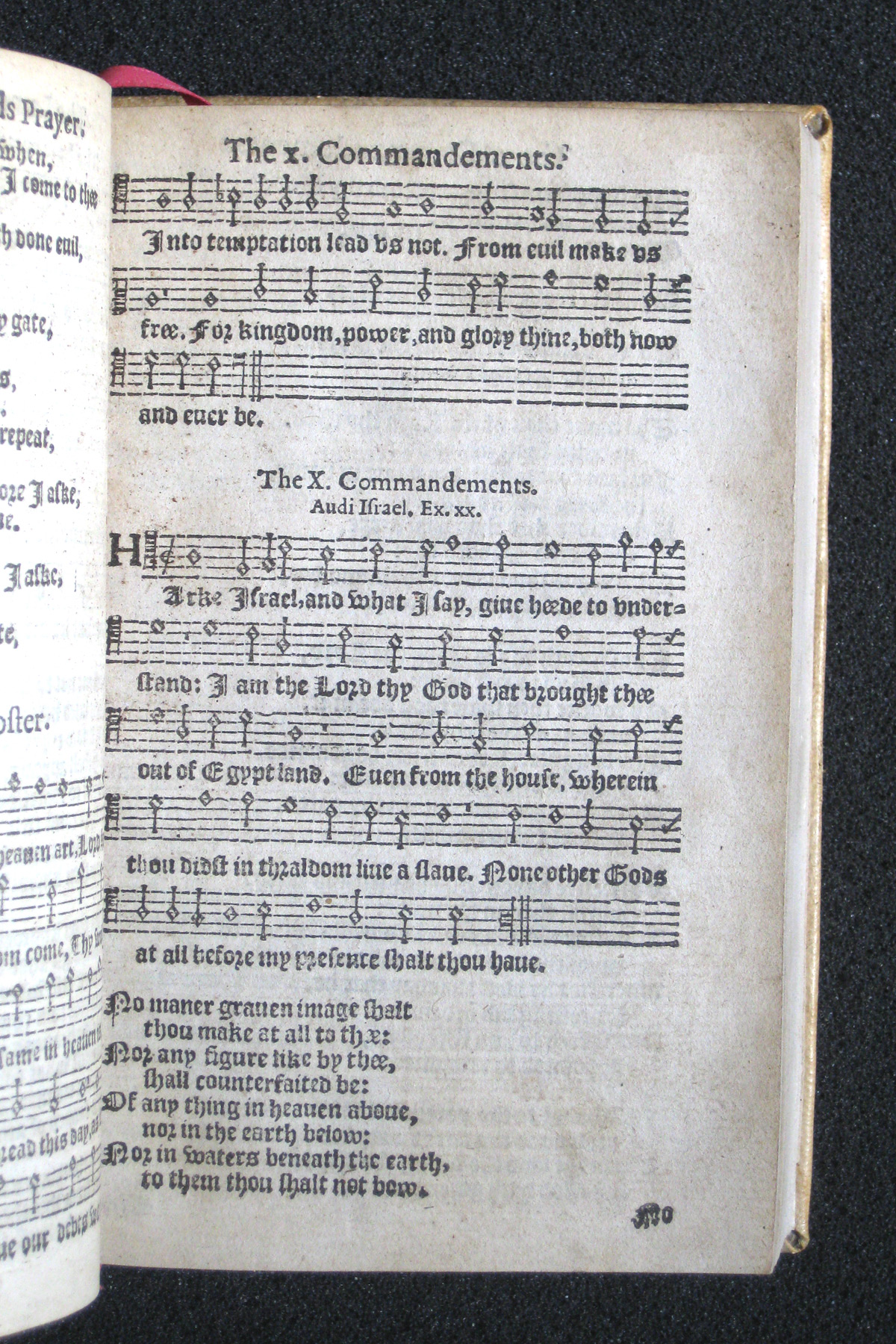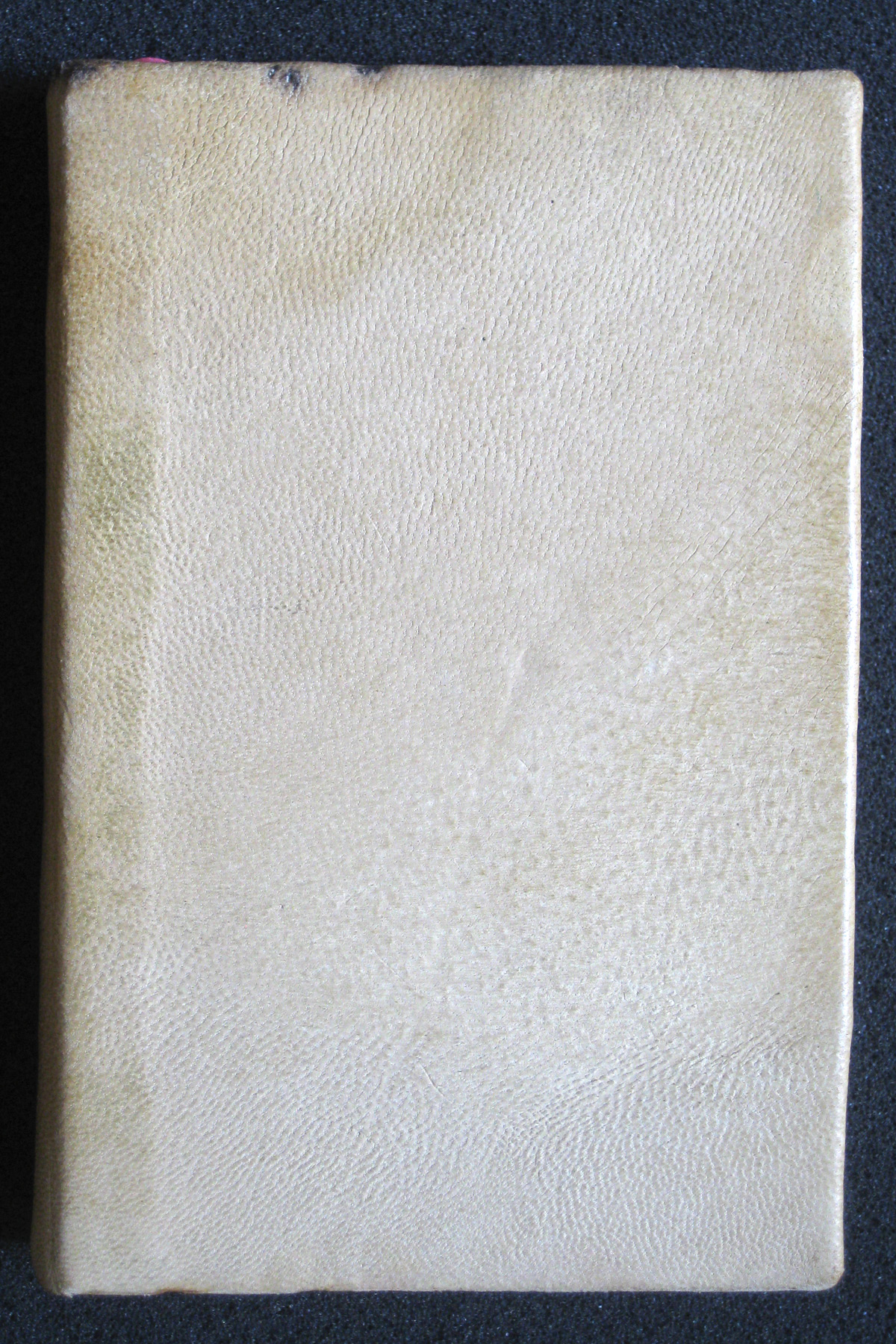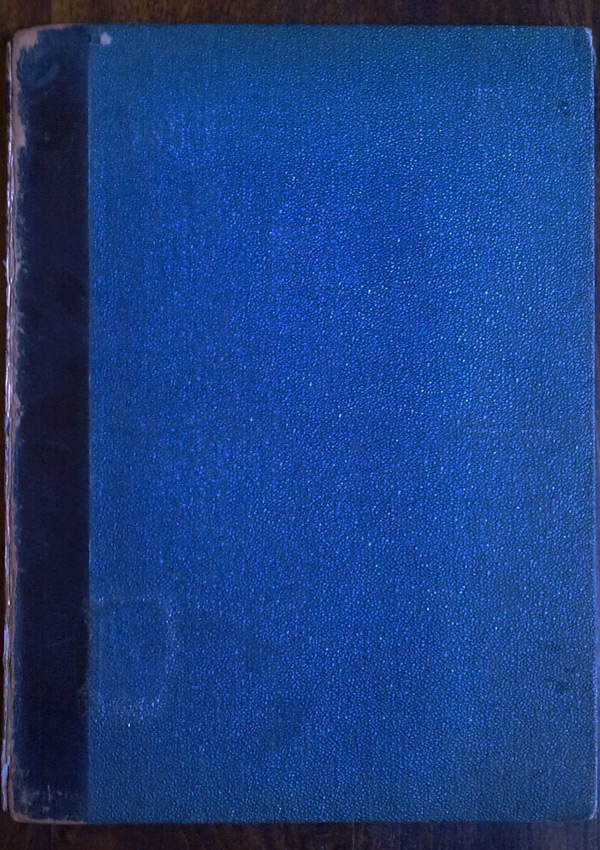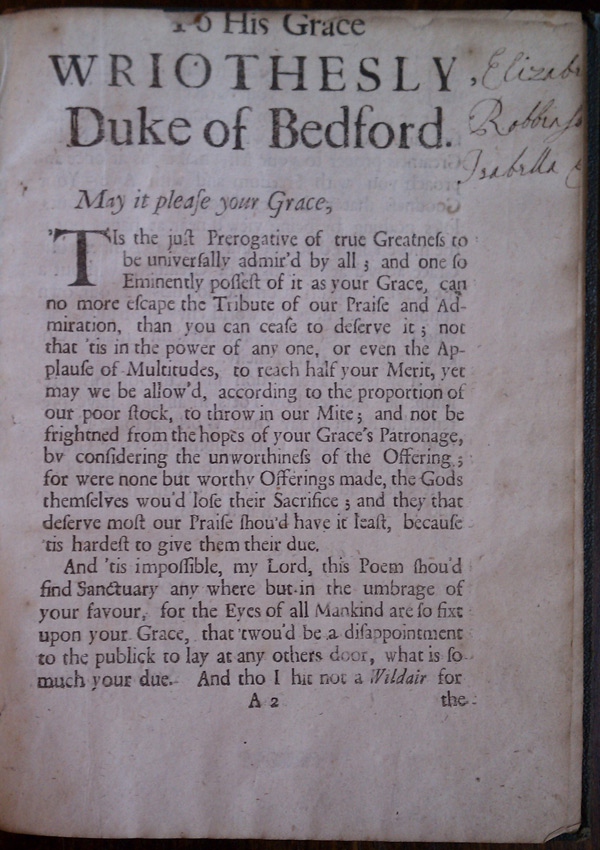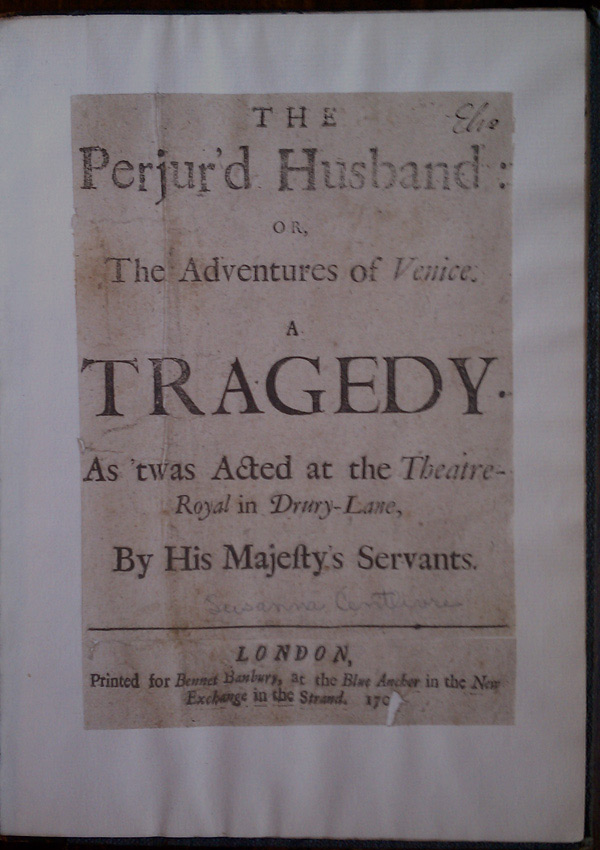Behn, Aphra. The forc’d marriage, or The jealous bridegroom. A tragi-comedy. As it is acted at His Highnesse the Duke of York’s theatre. London: James Magnus, 1671. Quarto. Wing B1734.
The Forc’d Marriage was likely the first piece of drama written by Aphra Behn, who is well-known to modern readers as the author of another play, The Rover, and the prose slave narrative, Oroonoko. And it was certainly the play that began her career on the professional stage. As the title page prominently indicates, it was first performed at the Duke of York’s theater. It was the season opener on September 20th, 1670, and made it to print quite early in 1671. It originally sold for one shilling, “stitcht.” Later standalone editions appeared in 1688 and 1690. Along with another early play, The Amorous Prince—also staged in 1671—The Forc’d Marriage demonstrates “an early interest in state politics and the interaction of power and sex. [It] suggests the power of legitimacy over brute force and the appropriateness of marrying for love” (Oxford Dictionary of National Biography). The remarkable prologue makes reference both to its author’s gender and, perhaps, the career as a spy that she may have had at the end of the interregnum: “The Poetess too, they say, has spyes abroad, Which have dispos’d themselves in every road.”
The present copy is imperfect: it lacks leaves B1 and F1.* The work as a whole appears to have been extracted, at some point, from a sammelband, as the numeral “5” has been written on the upper-right corner of the title page, suggesting that it appeared fifth in a volume, and the top- and fore-edges of the text block have been colored red. It is currently in a brown paper wrapper. The margins are generally ample, though the trimming to the top edge has in a few instances obliterated page numbers. There are small closed tears to the bottom edge of a handful of leaves near the gutter; most are less than 1cm, and none exceeds 2cm. The final leaf has had small areas reinforced with patches on the blank verso. A small portion of the outer forme of sheet M was insufficiently inked by the pressman, making words in the final four lines of M1r and M2v quite faint, though they do remain decipherable. Two sets of reader annotations appear in addition to the “5” written on the title page: on B1r, a reader has written in numbers next to names in the list of Dramatis Personae, which may indicate the number of lines spoken by each. And, on E3r, an annotator has underlined the word “honour” in a speech by Alcander and written “humour” in the margin as a correction.
Despite its imperfections, this is nevertheless a good copy of a noteworthy and fairly scarce play, the play the began the career of the Restoration’s most famous female dramatist and author, Aphra Behn. UNAVAILABLE
*I can provide the buyer with high quality, high-resolution images of both of the missing leaves—all four pages—that are ready to be printed and tipped-in as facsimiles.
